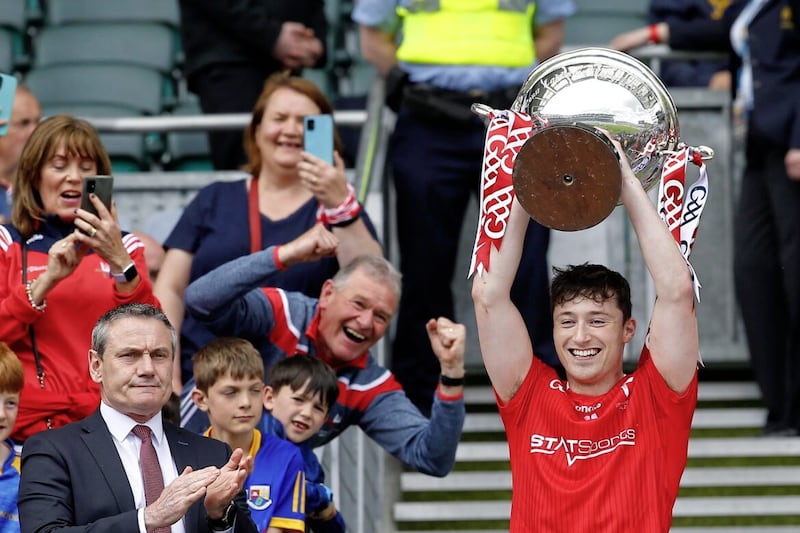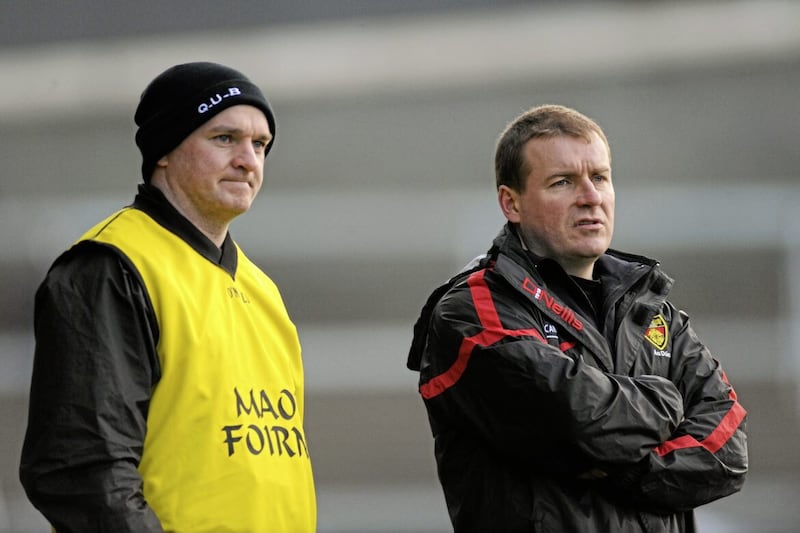POST-MATCH mixed zones are weird places. It’s when journalists hang over barriers to request interviews with players before boarding the team bus.
Some players stop. Some don’t.
Sometimes, no matter how many times you call a player’s name he’ll just breeze through. Which is fine.
They’re not contractually obliged to stop. They might've had a bad game too and just want to disappear as quickly as possible.
One night, a Republic of Ireland player pretended to be on his mobile phone only for it to start ringing as he made his way through the mixed zone.
As reporters, you always appreciate those Irish players who stop and talk regardless of the result.
Jonathan Walters, Robbie Keane and Seamus Coleman could always be relied upon.
One man who managed to avoid doing pre-match press conferences for a seven-year period and never stopped to chat to reporters in mixed zones was Glenn Whelan.
One can safely assume that print reporters paid the price for Eamonn Dunphy’s scathing attack on the international midfielder’s abilities a few years back.
During one RTE broadcast, Dunphy said that Whelan was a “terrible player. He can’t run, he can’t pass, he can’t tackle, he doesn’t see anything. He drives two Ferrari's. I think he’s a very lucky lad to have 50 caps for Ireland.”
No wonder Whelan skipped media duties after that assault.
Ahead of his so-called ‘Farewell’ game against Northern Ireland last November, where he felt obliged to attend a press conference, Whelan revealed he never drove a Ferrari.
He was undoubtedly stung by Dunphy’s criticism though.
The former Manchester City player has always been an ultra-competitive member of the Irish squad ever since Giovanni Trapattoni took a shine to him and made him a permanent fixture in his midfield.
‘Trap’, in fairness, saw something in Whelan that a lot of people didn’t see. The wily Italian likened the-then Stoke City man to Italy’s 2006 World Cup winner Gennaro Gattuso.
Fiesty, tough-tackling, in your face, breaks up the play – the unfashionable but essential element of any successful midfield.
Whelan’s currency was not defence-splitting passes or fancy flicks to rouse the Lansdowne Road crowd.
His role was more functional, side-to-side passes, keeping things simple and being the stage builder to enable others to perform.
Of course, he was never at the same level as Gattuso; he was never a world-beater.
His recovery wasn't great either.
Once the opposition breached his defensive line, Whelan was never getting back for a second chance at winning the ball back because he was one-paced.
But there is no doubt he’s been under-appreciated both at club and international level for a lot of his career.
“We always looked for an upgrade on Glenn,” said former Stoke City boss Tony Pulis, “someone we thought was more mobile, technically better, quicker, stronger, but every year the bugger would confound you by playing better and better and get his place back.”
At the risk of being accused of being wise after the event, I always felt there was still mileage in retaining Glenn Whelan despite the creeping years.
After Euro 2016, the Dubliner was on borrowed time with former boss Martin O’Neill.
In fairness, James McCarthy was younger, more energetic and although he didn’t have the defensive discipline as Whelan, O’Neill felt he could make a deep-lying midfielder out of the Everton man.
But injury put paid to that idea. O’Neill tried Harry Arter in the role, with poor results and in the latter stages of his tenure Jeff Hendrick was shoehorned into the defensive pivot.
But it was never going to work as the Irish midfield of Hendrick, Conor Hourihane, Cyrus Christie and Callum O’Dowda ran around like headless chickens in their 4-1 Nations League hammering at the hands of Wales last September.
Even though it was glaringly obvious O’Neill was playing without a recognised defensive midfielder there was no chance of an international recall for Whelan.
It was a weird decision by the FAI to brand the Republic’s friendly with the north last November as Whelan’s ‘farewell’ game.
Here was a player who was still capable of playing a role at international level.
As he sat beside O’Neill in Abbotstown on the eve of the game, Whelan insisted he was not retiring from international football, while the man beside him was happy to usher all that experience out the door at a time when neither Arter or Hendrick could pull the defensive midfield role off.
Despite being 35, Whelan’s game hadn’t really eroded with time because he never had any pace to lose. If anything, his reading of the game has improved as Aston Villa supporters can testify this season.
When McCarthy surveyed his options upon taking the job for a second time, he recalled Whelan.
It seemed pre-planned for Whelan to sit out the Euro 2020 opener against Gibraltar and be restored to the Irish midfield engine room for the visit of Georgia a few days later.
With Whelan anchoring midfield, it meant Hendrick and Hourihane could push forward and express themselves.
His disciplined presence gave the entire team structure.
And the fact that the Irish pressed the opposition higher than they’ve ever done than in the O'Neill era really tested Whelan’s fitness levels.
At times in the second half, he looked like a player running on empty before finding a second wind and winning some brilliant interceptions in the final quarter when Georgia threatened an equaliser.
O’Neill obviously felt he needed an upgrade on Whelan, but by discarding him he was throwing the baby out with the bath water.
McCarthy realised as much and put him back in the team.
He didn’t stop in the mixed zone to tell us how he felt afterwards – but Tuesday night was surely one of Glenn Whelan’s greatest triumphs in football.








